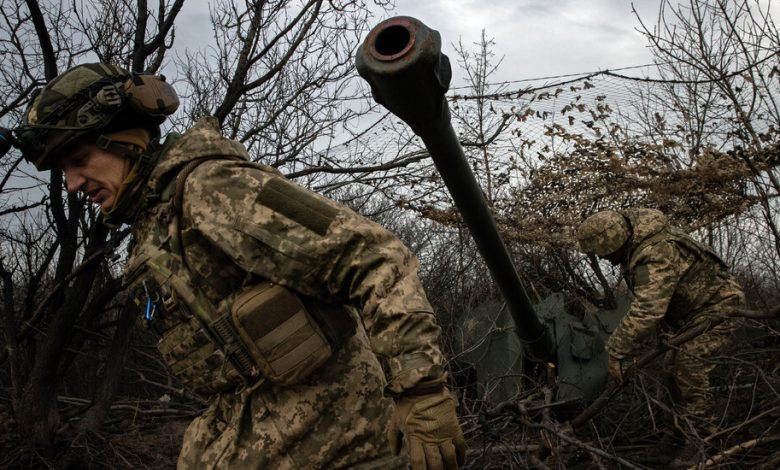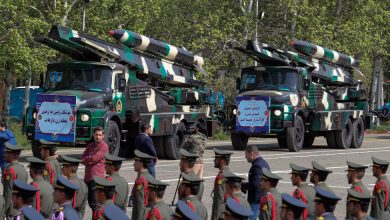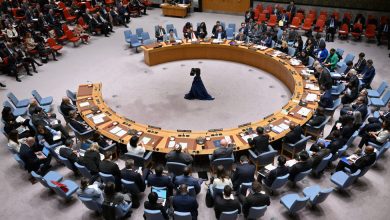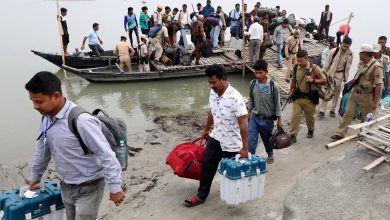Russia Makes Small Battlefield Gains, Increasing Pressure on Ukraine

Russian forces have scored small territorial gains along Ukraine’s eastern front in recent weeks, using their manpower advantage in grueling battles and prompting the Ukrainian authorities to consider a push to mobilize up to 500,000 soldiers to sustain the exhausting fight next year.
The chief of Ukraine’s military intelligence, Kyrylo Budanov, said this week that he saw no alternative to a large-scale mobilization to make up for Ukraine’s losses. And President Volodymyr Zelensky said his army chiefs had asked him to mobilize 450,000 to 500,000 men.
“This is a serious number,” Mr. Zelensky said at a news conference on Tuesday, adding that a plan still had to be drawn up before he could make a decision. Although many Ukrainians have yet to be drafted into the military, the authorities are reluctant to resort to mass conscription for fear of stirring up social tensions.
Most recently, Russian troops have been closing in on the city of Avdiivka, a Ukrainian stronghold in the Donetsk region. The capture of Avdiivka would be a strategic success for Russia — the city is a linchpin of Ukrainian defenses in the region — and would deal a blow to Ukrainians’ morale. The city is a symbol of resistance, having withstood nearly a decade of warfare since Russian-backed forces first tried to seize it in 2014.
Russia’s recent advances near Avdiivka, as well as around other cities such as Kupiansk, Bakhmut and Marinka, are also further evidence that Russia has firmly seized the initiative on much of the battlefield, after Ukraine’s top general acknowledged last month that his country’s summer counteroffensive had stalled.
Russia is making that progress at a critical moment for the government in Kyiv. Political infighting in Washington and in the European Union has blocked the delivery of military and financial aid packages that Ukraine says it desperately needs to hold its lines against Russia.
“Currently, the situation on the front line is difficult and is gradually deteriorating,” Yehor Chernev, the deputy chairman of the Ukrainian Parliament’s committee on national security, defense and intelligence, said in an interview. “Without American ammunition, we are beginning to lose territory that was hard won this summer.”
On Friday, departing Prime Minister Mark Rutte of the Netherlands announced that his government was preparing to send Ukraine a first batch of 18 F-16 fighter jets, the powerful aircraft that Ukraine has long been lobbying for. Ukrainian pilots have already begun training on the jets in countries such as Romania, which the Netherlands provided with at least five F-16s for practice purposes.
Since launching offensive operations near Avdiivka in October, Russia has gained a total of about seven miles in all directions around the city, according to the Institute for the Study of War.
“But it has cost them dearly,” Oleksandr Shtupun, a spokesman for the Ukrainian Army, told national television on Wednesday. He noted that Russia had suffered 25,000 casualties in the east over two months, most of them around Avdiivka.
Although these figures could not be independently verified, Britain’s military intelligence agency said last month that Russia was probably experiencing the highest casualty rates of the war so far and that the battle for Avdiivka was likely the reason. Ukrainian troops have also suffered heavy losses.
Nonetheless, Russia’s incremental gains largely result from the sheer mass of its army.
“I would say the motto of their attacks is ‘We have more people than you have ammunition, bullets, rockets, and shells,’” Tykhyi, a major fighting with the Ukrainian National Guard in Avdiivka, said in audio messages, using only his call sign to identify himself, as per Ukrainian military rules.
Tykhyi said Russian forces were using a range of tactics on the battlefield, including frontal assaults, feigned attacks and smoke to hide attacks. He added that Russia was monitoring movements into Avdiivka, meaning that Ukrainian soldiers can enter only at night and “have to turn off their headlights long before” getting in.
Moscow’s offensive push in the east has consisted of a series of localized assaults following an arc that stretches from Kupiansk in the north to Marinka more than 120 miles to the south.
Kupiansk, which was liberated from Russian occupation last year, remains under Ukrainian control. But months of heavy bombardment have devastated the city, and Russian forces have been attacking relentlessly from the north and east, nibbling away at Ukrainian land as they try to reach the outskirts of the city.
In Avdiivka, a hot spot in the battle for the city is an industrial zone to the east. The position is so vast and covered in trenches, bunkers and tunnels that some parts have been compared to an anthill.
The Institute for the Study of War, a Washington-based think tank, said last month that Russian forces had advanced into the eastern part of the zone. Geolocated footage suggests that they have now seized most of it.
Thibault Fouillet, the deputy director of the French Foundation for Strategic Research, said both sides were now locked in bloody, inconclusive fighting — a situation that he compared to World War I, when hundreds of thousands of soldiers were thrown onto the battlefield to conquer and defend small patches of land.
Russia’s brutal offensive operations, from Bakhmut earlier this year to Avdiivka today, have enabled it to conquer more land than it has lost in 2023, according to a recent analysis by Estonia’s Ministry of Defense. But much like Ukraine’s limited successes during its counteroffensive, none of these gains have fundamentally changed the balance of power along a front line that has barely moved this year.
Mr. Fouillet said that each side was now hailing the slightest gain as a strategic success for political purposes. “In reality,” he added, “the stakes are low, and the advances are minimal.”



